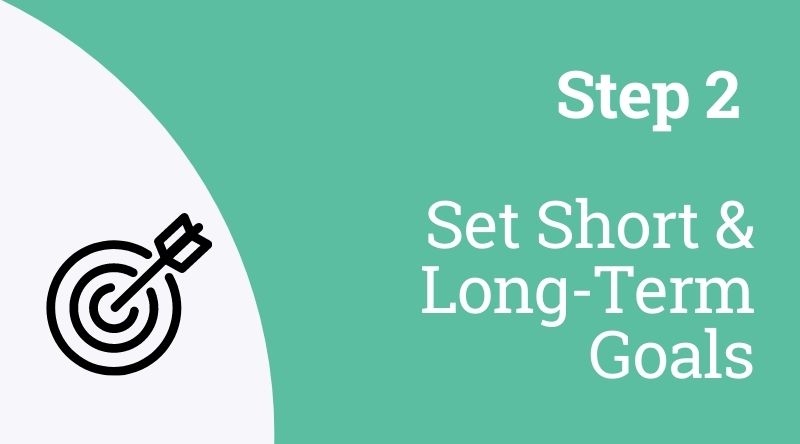Learn Swedish: The Ultimate Guide For Beginners
Learning a new language can be one of the most rewarding and exciting life experiences. It broadens your understanding of different cultures and widens the amount people you can speak with.
While Swedish isn’t the most spoken language in the world, learning it can still be rewarding and open doors for you.
Swedish is quite different from English, even though both are Germanic languages, and you'll probably struggle with the pronunciation a little bit.
But I guarantee you that if you practise enough then you'll soon find yourself understanding more and more of this beautiful language.
There are some key differences between English and Swedish that I'll go through in this guide. But there are also many things that Swedish and English have in common which will make it easier for you to learn.
In this article, I'll cover common concerns and questions you might have about learning Swedish, and will try to answer them to the best of my ability. Hopefully, you'll get some tips that will make your Swedish learning journey a smooth one.

Pro Tip
And by the way, if you’re thinking about learning Swedish, then check out my course, Swedish Uncovered.
Swedish Uncovered is an online Swedish course that helps you learn Swedish through the powerful StoryLearning® method. I can guarantee you that it’s both fun and effective.
If you’re ready to get started, then click here to find out more and for a free 7-day trial of the course.
Here’s what we’ll cover in this article:
There are some common questions, notions and even misconceptions about Swedish that I'll go through in this guide.
I have broken down this article into a few sections, with each section focusing on different aspects and questions.
If you have a particular question that you want answered then you can just click on it below to jump directly to that section of the page
I’ve also prepared a special PDF version of the post so you can download it and read it anywhere, anytime.
Table of Contents
I'll touch on both Swedish culture and history, as well as the technical details of the language, to give you as comprehensive a guide as possible. I'll also give you some resources and tips to help you learn Swedish.
Why Learn Swedish?

So why learn Swedish? It makes sense to start with this question to quickly go over the benefits of learning Swedish.
Learning a new language is always positive, regardless of the language. But let's take a deeper look into the benefits of learning Swedish in particular.
1. Be Able To Communicate With 10 Million People
Around 10 million people or so speak Swedish in Swedish-speaking countries, some in Sweden and some in other countries like Finland. Learning Swedish means you can directly communicate with these people.
And while many Swedes are fluent in English, it's always more comfortable to speak in your local language. So if you can communicate well in Swedish, you will probably be quite popular as well.
2. Improves Your Brain Function And Memory

A neat thing about learning a language is that it also boosts your brain function and improves your memory.
Research from Cambridge shows that people who have been speaking two languages from childhood have more neurons in their brains and therefore denser grey matter.
Bilingualism also has a big impact on the system of nerve fibres that connect all four lobes of the brain. The system is called white matter and it coordinates the communication between the different parts of your brain and it helps your brain learn and function.
This impacts adult learners as well, and in general, adults who speak two languages have an improved brain reserve in contrast to adults who only speak one language.
Additionally, adults learning a new language stimulate similar brain parts as young children do when learning to speak. Another interesting fact is that bilingualism can delay the onset of dementia.
Your memory also improves when learning a new language and that’s because of memorisation. By learning new languages you will help your brain find techniques to remember new things and learn.
Regular practice will improve this ability and make you better at remembering new things. In particular, language learning increases your ability to hold more information in short-term memory.
So make sure to take a few minutes out of your day to practise new words in Swedish or write a dialogue. It will improve your brain function as well!
3. Boost Your Career Or Business
Being able to communicate in a work setting is vital. And if you run your own businesses and want to expand to other markets you'll have an advantage if you speak the language.
Most Swedes speak English, so it won't be the end of the world if you don’t speak Swedish. But if you have a business and want it to do well in Sweden, then learning Swedish is the way to go.
If your business has a website where you sell products, you should have a Swedish version of that website.
Many Swedes won’t buy from a business that markets their products for the Swedish market, but uses English in all the marketing and on the website.
It looks like low effort at best and a scam at worst. Why would they trust someone who can’t even market the product in the language of the customers it's intended for?
If you want to build a sustainable business in Sweden then you need to win the favour of your customers and if so you need to speak Swedish.
If you're looking to open an office in Sweden, then it's also preferable to speak Swedish, because most employees will probably be more at ease that way.

4. Enjoy Swedish Culture
Another advantage of learning Swedish is that you'll be able to take part in the culture.
Even if you've moved to Sweden, have connected with some coworkers and are invited out after work occasionally, you won’t really feel like you are “in” Sweden before you can actually take part culturally.
Your coworkers won't invite you to their celebrations and festivities if you're oblivious or don't care about the customs.
Make sure to familiarise yourself with traditions and customs in Sweden and hopefully, you'll be ready to take all your newfound information to practise when you get invited to the next midsommarfirande or kräftskiva.
Another advantage to learning Swedish is that you will be able to take part in the rich cultural life that Sweden offers.
You'll be able to understand books, movies, articles and art exhibitions you maybe didn't understand before.
There are many Swedish works that either haven't been translated into English or include nuances that make translating to English hard. Therefore, make sure you enjoy Swedish books and movies in their original language.
5. Explore Sweden By Chatting To Locals
You'll be able to explore Sweden even if you don't speak Swedish, as most Swedes speak English after all.
But to really get deep into all the different things you can discover, learning Swedish is a must.
The chance to learn more about Sweden and Swedish history is higher when you speak the language.
Perhaps an elderly local will tell you a story about ringmuren in Visby or what happened after Kristian the Second was crowned king. Maybe some information is passed on for generations and some might be things you'll never hear from another place.
Most elderly Swedes have a very basic level of English and without speaking in Swedish, you'll probably never get to hear about these interesting tidbits of information.
What Are The Key Linguistic Features Of Swedish?

Of course, it's important to learn the actual language when wanting to pick up Swedish: verbs, nouns, word order and more. But it's also crucial to understand the linguistic particularities of Swedish.
In this section, I'll touch on and explain a few of the linguistic features of Swedish, which will give you a foundation to make it easier to learn the actual language.
Let's start by explaining what linguistic features are. They are the characteristics of a language and can help explain how the language works.
They're usually used to classify a phenomenon in the language, such as a sound, a grammar rule, a category of words etc. We'll go through a few of them here, but let's start with how Swedish originated and where it is spoken.
1. How Swedish Originated

Swedish, along with Norwegian, Faroese, Icelandic and Danish, descend from Old Norse which developed into its own language from the Proto-Norse language in the 9th century.
Old Norse was spoken in the northern parts of Europe and is commonly called the language of the Vikings.
It was also possible to encounter something similar to Old Norse in Western and Eastern Europe during this time, following the Viking expansion.
Old Norse existed until around the mid to late 14th century, but it was possible to find texts written in Old Norse even later than that.
Swedish emerged from Old Norse a bit earlier than the 14th century and the beginning of Old Swedish, the language that emerged from Old Norse, is dated to 1225.
It was the same year that the Västgöta Law was enacted, which is the oldest document written in Swedish to exist.
Old Swedish is divided into two parts: “older” and “younger”. But as a whole, Old Swedish existed for around 300 years before Gustav Vasa ordered a new translation of the Bible that also revised the language.
The new Swedish was called modern Swedish and was used for around 400 years.
After that came Contemporary Swedish, which is also the Swedish used today. It had a formal starting point in the late 19th century but went through a lot of reforms during the 20th century.
A few of the most impactful reforms were the spelling reform that changed many of the older spellings, the verb-plural reform which removed all the verbs' plural forms and the du-reform which changed how to address someone the proper way.

2. Where Swedish Is Spoken
Swedish has more than 10 million speakers all over the world. The exact number is unknown, but around 9 million speak Swedish in Sweden.
The rest are either native speakers who have moved to another country or are second-language speakers who either learned Swedish by themselves or live in a country where Swedish is spoken as a minority language.
The majority of the native speakers of Swedish are of course in Sweden. But a few hundred thousand people speak Swedish in Finland as their native language.
Swedish also has a status as an official language in Finland which, as a result, means that it is taught in Finnish schools. It's probable that a few more Finns speak Swedish as their second language, but that number is unknown.

3. How Swedish Word Gender Works
Word gender is a common concept in Swedish that might feel foreign to English speakers. If you know your English language history you might know that word genders existed in Old English, but that they fell out of the language during the Middle English period.
No worries if you don't know anything about it, I'll explain the word genders here. Most languages that use word gender, for example, the romance languages, use masculine and feminine gender, but that's not how it works in Swedish.
Swedish instead uses common gender and neuter gender. To quickly explain them: common gender is a term to refer to all three genders, feminine, masculine and neuter.
Swedish used to have distinctions between feminine and masculine words but that is essentially removed now. So common gender is a term for all three genders.
Neuter is now its own category, but the name means that it is used for “neither” of the genders mentioned above. Neuter is used for things that aren't alive, while common gender is used for things that are alive.
That isn't a completely accurate description, however, because exceptions exist. For example, “child” and “witness” are neuter, while “stone” is common gender. In general, that classification will work though.
So how do you use these genders? They are only used for nouns and they are commonly referred to as ett-gender and en-gender.
That's because the gender indicates if the noun should be preceded by the word en or ett, the translation of “a/an” in English.
As a rule, most Swedish nouns take common gender, so you use en before them. The other option is ett which indicates that the gender is neuter.
Here are a few examples:
- ett barn (a child)
- en skog (a forest)
- ett hus (a house)
- ett äpple (an apple)
- en laddare (a charger)
4. Definite Nouns Are Marked By Suffixes, Not Articles
To continue on the same track as above, you can make all these nouns definite. In English, you simply use the article “the”: “the child”, “the forest” etc.
That's not how you do it in Swedish and instead, you have to use a suffix after the noun to indicate that it is definite. These suffixes depend on the word gender, just as the nouns do. But it's quite easy to get the hang of because the en or ett that is used before the noun is used as a suffix when the word is definite.
If the word is a common noun, like skog or laddare, you move en to the end of the word. One thing to be observant of is that if the noun ends with a vowel you should only add “n” and completely skip the vowel in en.
Skog and laddare look like this when they're definite nouns:
- skogen (the woods)
- laddaren (the charger)
Words that take neuter gender like barn, hus and äpple get their definite form in the exact same way as the other nouns get theirs. The only exception is that one “t” is removed so the suffix becomes et instead of ett.
If the word ends with a vowel, it's the same as the en suffix when you only add “t” instead of et.
This is the definite form of the following words:
- barnet (the child)
- huset (the house)
- äpplet (the apple)
5. How To Use Swedish Pitch Accent

Swedish is a pitch-accent language, which might be a totally new concept for you. If so, no sweat!
Pitch accent means that you change your pitch on different syllables in the word to indicate the meaning of the word.
Swedish isn't a fully tonal language like Standard Chinese and Vietnamese where all the syllables have different tones, but instead, it's just certain syllables that have this pitch accent.
You can divide pitch-accent languages into two groups. Languages that have a single pitch contour and languages that can have more than one pitch contour (on the accented syllable).
Swedish uses the latter one and that means that instead of the pitch curve only going one way, like low or high low, the curve can go up and down within the accented syllable, like high, low, high.
These sounds are differentiated in Swedish by stressing the syllables. These stressed syllables have one of the two tonal accents that Swedish uses, the acute or the grave accent.
Exactly how these two tonal accents are pronounced might vary a bit depending on different Swedish dialects. For example, central Swedish doesn't sound the same as southern Swedish and how high or low the tone sounds might vary between the dialects.
Here are a few Swedish words that are spelled the same, but will sound different depending on how you stress the syllables:
- anden (the duck)
- anden (the spirit)
- banan (banana)
- banan (the track)
- fasan (pheasant)
- fasan (the horror)
- brunnen (the past participle of burn)
- brunnen (the well)
The easiest way to learn this is to follow the rules of StoryLearning and read and especially listen to short stories in Swedish. As you do, pitch accent will become a more familiar concept.
Also, you don't have to worry if you don't completely get it. You'll be able to communicate with Swedish speakers anyway as the context should make your meaning clear.
6. How To Form Swedish Sentences

Another thing that English learners might be uncomfortable with is how to form correct Swedish sentences. English is an SVO language, which means that in a sentence subject-verb-object is the correct word order.
Swedish also uses the SVO order a lot, which means that in many cases English speakers will find it quite easy to make Swedish sentences.
Something that Swedish uses, however, is V2-order. That means that the verb should always be placed in the second position in a sentence.
There are some sentences in English that use V2-order, like “I teach science”. But in Swedish the verb should always be in the second position.
If you add something to the sentence above before “I”, like: “In school, I teach science”, then that sentence is correct in English, but not in Swedish because the verb must always be placed second.
If you wrote that sentence the “Swedish way” it would sound like “in school teach I science”, which is completely wrong in English.
It's very important to take note of the fact that Swedish uses V2 order. English sentences will, in many cases, be structured in the same way as Swedish, but not always. So make sure that you're aware of these differences.
What Do I Need To Know About Swedish Culture?

You're learning Swedish, so perhaps you're planning to move there sometime as well? That sounds like a great plan and you can improve your linguistic abilities a lot by living in a foreign country (although it's no guarantee).
However, it's important to have some knowledge about the culture before moving there. I'm guessing that you already have some preconceptions about Sweden. That will probably change after moving there.
The most common preconception about Swedes is that they are cold and aloof and hard to make friends with. That might be true in some circles. And Swedes are definitely reserved before you get to know them. But a lot of foreign visitors have a lot of Swedish friends as well.
The most important thing is to learn the language because Swedes will in general be much more easy-going with someone they don't have to speak English with. They speak English well, but you always express yourself better in your native tongue.
Swedes are mostly reserved to strangers, but when you get to know them you'll probably feel like old friends in no time.
The advantage to making friends with Swedes is that you'll get invited to lots of fun Swedish traditions, like midsommar, kräftskivor, Valborg etc.
Swedes are big on partying so it's great if that is your type of scene. If it isn't then that's okay, you'll probably find someone who has similar hobbies as you, maybe in a club or something similar.
One thing to never ever do in Sweden however is to play loud music on the underground, watch shorts without headphones or talk loudly on your phone.
Swedes find that disrespectful and annoying. So just avoid doing that and you'll probably be able to make friends with Swedes.
Is Swedish Hard To Learn?

So is Swedish hard to learn? It might be for some, but not so much for others.
One thing that might make it hard for you as an English speaker to learn Swedish is the fact that Swedish words are pronounced further back in the throat than English words are.
There is also a lack of reflexive pronouns in English compared to Swedish, which might result in Swedes having a harder time understanding what you mean when speaking about someone.
For example, the sentence “he kicked the ball to his brother” can have two translations in Swedish, either “han sparkade bollen till sin bror” or “han sparkade bollen till hans bror”.
The first one means that he kicked the ball to his brother, and the other means that he kicked the ball to someone else's brother, but not his.
This is a concept that doesn't really exist in English, so it might be very confusing when you say a sentence like that and Swedes are very confused as to who you mean. But as long as you clarify it, it shouldn't be a problem!
Särskrivning
Another thing that English speakers might struggle with (and quite a few Swedish speakers as well, which drives the other Swedish speakers absolutely mad) is the use of särskrivning.
It's a concept that doesn't exist in English, so there isn't even a word for it! Särskrivning is when you write a word that is supposed to be a single word as two words, which completely changes its meaning.
In English, you can have two nouns after each other that are about the same thing like “retail employee” or “ICU nurse”.
In Swedish these two nouns are supposed to be written together and if written apart the meaning could in some cases change.
Even if the meaning doesn't change, the spelling will be incorrect if written apart and that is the biggest pet peeve for Swedes nowadays.
A few examples:
- kassapersonal/ kassa personal (sales clerk/ worthless staff)
- svensklärare / svensk lärare (teacher in Swedish/ a teacher that is a swede)
- kycklinglever/ kyckling lever (chicken liver/ a chicken that is alive)
- socialsekreterare/ social sekreterare (welfare worker/ a social secretary)
- extraknäck/ extra knäck (moonlighting/ extra butterscotch)
Advantages For English Speakers

In general, as an English speaker you'll have an advantage because Swedish and English share a lot of cognates and have similar grammar in many cases.
Cognates are words that share the same origin and are therefore really similar. A few examples are hus-house, äpple-apple, lampa-lamp etc.
Swedish and English are both Germanic languages and share a past and it will therefore be much easier for English speakers to learn Swedish.
If English isn't your native language and you speak a language that is very different from Swedish, then learning Swedish will be much, much harder.
But nothing is impossible and with practice and determination, you’ll be able to achieve almost anything. The most important thing when learning a new language is practice so speaking with a local might be the way to go.
Or wait…on second thought, finding a local who speaks Swedish with you without switching to English might be the most difficult part of learning Swedish.
I recommend finding study groups online or other students who are learning the language to practise with. That will make it easier and more enjoyable to pick up the language. Better yet, find a Swedish tutor on LanguaTalk, my favourite website for finding high-quality language tutors.
How Can I Get To Grips With Swedish Pronunciation?

One of the things that foreign learners of Swedish find hardest is pronunciation. While I've already touched on pronunciation in the points above, I will speak a little more about Swedish pronunciation here and how you can master it.
The most difficult thing with Swedish pronunciation is of course pitch accent which I've spoken about, but also the fact that multiple syllables can sound like the same sound.
The SJ Sound
I'm speaking about the sj-sound here. The sj-sound has a lot of different spellings and is something that most learners of Swedish struggle a lot with.
The most important thing is that you pronounce the sound with the airy “shee” sound. But don't worry about it, the more you learn and read Swedish the easier it will be to recognise it and understand it.
Here are a few spellings the sj-sound can have:
- sj – sjö (lake)
- sk – skön (pleasant)
- stj – stjärna (star)
- skj – skjorta (shirt)
- sch – schack (chess)
- j – jour (on call)
- ch – chef (boss)
- g – giraff (giraffe)
3 Letters Unique To Swedish
Another pronunciation difficulty that you'll have to come to terms with is the pronunciation of å, ä and ö. For an English speaker who has never come across these sounds, this might seem very hard.
But, it's quite easy when you get the hang of it because the sounds are straightforward and sound the same, regardless of what syllable they are in. Å sounds like o in “or”, Ä like ai in “pair”, and Ö like ea in “heard”.
If you just learn these sounds, then pronouncing words with these sounds in them should be easy.
After you have mastered these vowels you can use them in real-life scenarios while speaking to a Swede. Here it's also important to know how the vowels affect the consonants and in turn the pronunciation.
Hopefully, this part won't be particularly tricky, but you still need to master it to pronounce the sounds correctly when you speak.
Soft And Hard Swedish Vowels
Swedish uses the concept of soft and hard vowels. A, O, U and Å are hard vowels while E, I, Y, Ä and Ö are soft.
If g or k are before one of these vowels in a word, the pronunciation will change depending on whether the vowel is hard or soft.
If the consonant g comes before the hard vowel a, like in gardin, g should be pronounced as a hard g. The hard g in Swedish is pronounced basically the same as the hard g in English.
If the g is before a soft vowel, like ä, in the word gäst, the g should be pronounced as a soft g. It sounds similar to the y sound in “yet” in English.
If the consonant k comes before the soft vowel ö, like in the word körkort, k should be pronounced with a soft sound. It sounds a bit like the “sh”-sound in “shine”.
If the k is hard, like in the world katalog, the hard k is pronounced like the hard k in English. There are some exceptions to these rules though, that you'll have to learn.
For example, both gem and kebab (which have the soft e) should be pronounced with hard g and hard k.
4 Pitfalls To Keep In Mind When Starting To Learn Swedish

Obviously, it's difficult to create a learning plan that is absolutely perfect, but there are a few things you should avoid to make sure that your language learning journey is as smooth and easy as possible.
1. Don't Set Your Expectations Too High
The biggest pitfall is setting your expectations way too high.
High expectations often lead to stress and pressure because you “need to live up to these expectations” or anxiety and regret because you failed to live up to the high expectations you set.
These emotions are recipes for disaster because you're not going to be able to enjoy the process of learning a language if you associate it with these bad feelings.
The best you can do is enjoy the process and lower your expectations. The process of learning a language will be much more enjoyable and fun, and you won't be as stressed out about reaching certain goals.
2. Don’t Learn Random Lists Of Words
Another pitfall is when you learn a random list of words instead of an organised one.
It will be more difficult to learn a list with random words because your brain will have a harder time associating these words with other words.
It's better to have a list of words that are in the same theme. That will make it easier to see the correlations between these words and also easier to use them when you speak.
Now you actually have a subject with multiple different words that you can speak about.
And of course the most powerful way to learn new words in Swedish without memorising lists is to read short stories in Swedish. As you read at your level, you'll pick up the vocabulary you need naturally, without having to study it.

3. Don’t Translate
Or rather: don't translate with translation apps. It's better to use dictionaries to understand the meaning of a word, instead of directly translating it in an app like Google Translate.
Oftentimes different languages have different word orders and different meanings to their words and apps might not be able to pick up these nuances.
For example “I will catch a flight” might make a lot of sense in English, but directly translated to Swedish that would be “jag ska fånga ett flyg”, which is just wrong and means literally (catching) a flight with your hands.
There are many of these phrases in English that just don't work in Swedish and by using a translation app, maybe you mistakenly think that these sentences work and use them.
I have a friend who visited Sweden a few years back and he used a translation app to communicate.
For some reason, he ended up at a market in the woods in Småland. One of the vendors asked him if he wanted to buy butterscotch toffee.
He used the app and answered: “nej tack, det är inte min kopp te” (no, thank you. It’s not my cup of tea (literally a cup of tea)). Imagine the vendor's surprise when my friend started talking about tea instead.
So the lesson is to avoid using an app and instead use a dictionary and grammar book to translate the word and then form the correct sentences. Or better yet, learn Swedish phrases – more on that in a second.
4. Don't Shy Away From Speaking
The most important thing when working towards fluency is speaking. And don't be afraid to make mistakes!
Hearing the language and then trying to form your own sentences and using them when speaking will boost your learning immensely and may make you more likely to remember the new things you've learned.
Speaking is so important when it comes to learning a language so I would truly recommend that you reach out to someone to speak to, maybe a friend or family member who speaks Swedish or someone online that's also learning Swedish.
It's very important for your learning so make sure you do that. You can also work with a high-quality Swedish language tutor on a website like LanguaTalk which hires only the top 10% of applicants.

What’s The Best Way To Become Fluent In Swedish?
I just mentioned a few things you should avoid to make your language learning as easy as possible, but there are also a few things you should do to kickstart your Swedish language journey.
1. Enroll In Swedish Uncovered To Learn The Fundamentals (And More!)

Learning through story is proven to be way more effective than other types of learning. That's because it's more engaging and interesting than the traditional method of reading a grammar book and doing exercises.
That's something I have focused on in my course Swedish Uncovered. Humans are hardwired to learn through stories, so my course is based on an exciting story in Swedish to help you learn the language, regardless of how much Swedish you already know.
You will both be able to read and listen to the story. Try it out for free for seven days. You'll be amazed at how quickly you pick up the language.
2. Set Short And Long-Term Goals

Setting goals is a great way to motivate yourself to keep learning and also feel a sense of achievement while you do it.
Just bear in mind to not have too high or impossible goals, because that will hinder your learning instead.
I recommend setting both short and long-term goals. By setting long-term goals you have a clear picture of where you want to be in your language learning journey, in say, a year or maybe six months.
It's a goal that you haven't reached yet, but something to dream about when you think ahead.
The disadvantage of having a long-term goal is that there is a very long time left until you achieve it, which can result in you feeling like you haven't achieved anything and maybe feeling deflated or unmotivated.
That's why you should add a few short-term goals as well. These are goals that may be for a week or a day. It could be goals like learning a set number of words per day or reading 5 chapters in your Swedish book that week.
These are goals that you will soon achieve which will continue to motivate you to do better and continue your learning. So make sure to add both long and short-term goals to your plan.
3. Learn Swedish Phrases

Another useful tip is to learn Swedish phrases. You can do that by getting a phrase book or searching the internet.
The useful thing about learning Swedish phrases is that you have several phrases that you can use on the go. It will be way easier to communicate in Swedish if you are travelling through Sweden if you have a phrase book with you.
It's a book that is probably written by a Swede or by someone that is very knowledgeable about the language and that means that you can trust it to have correct and good phrases. It's a great tool to use instead of a translation app.
Learning Swedish phrases is also an easy way to start speaking without getting too hung up on translation or grammar. Speaking of which…
4. Don’t Get Hung Up On Grammar

Another top recommendation is to not get that hung up on grammar. Yes, you will probably make a lot of mistakes. And no it isn't the end of the world. The most important thing is to use the language, make mistakes and learn from it.
Don't get so hung up on the grammar or making mistakes that you become scared of speaking. That's what the evil twins, the grammar villain and the fear villain want. But don't let them sabotage your dreams!
You'll learn all the grammar you need eventually (and you don't need to know everything), so for now, it's better to just keep trying and keep speaking.
5. Find Swedish Speakers To Talk With

Speaking of speaking. The best way to nail both the grammar and the speaking is to find a Swedish person to speak to.
That person will know better than anyone when you say something that is incorrect or when the grammar is a bit off. To improve your knowledge as much as possible it's better to find a person that knows the language well and can help you.
So how do you find a Swedish person willing to help you? Well, this might be a little bit tricky, because you can't really strike up a conversation with someone out in the streets and expect them to help you. Most people have somewhere to be.
It's better to find a person to help you in a language setting. Perhaps there is a club for Swedish learners that you can join or a Facebook group for people to connect with Swedish speakers that will help them with their language learning.
If you're lucky, perhaps you know someone who speaks Swedish and wants to help you. Otherwise, you can book lessons with a high-quality Swedish language tutor on a website like LanguaTalk, my top recommendation for language tutoring.
What Are The Best Resources To Learn Swedish?
Now that you have all the information you need to start learning Swedish, here are some resources that can help you learn quickly and effectively, all while having fun.
Online Swedish Courses

- You can use my online course, Swedish Uncovered to learn Swedish. It's completely story-based so you can learn by reading and listening to an engaging story, especially written for beginners. The course will teach you everything you need to know to start speaking Swedish like a native.
Short Stories In Swedish

- If you are interested in a similar story-driven concept, but in a physical form, you can check out my book: Short Stories in Swedish. It's a book that uses my special StoryLearning method where everything is written in short stories, but it fits you better if you want to read an actual book when learning a language.
Learn How To Speak Swedish

Looking for a Swedish tutor? Languatalk is my favourite website for finding the best tutors and teachers to help me practise speaking.
I’ve found it especially important for learning how to speak in Swedish since Swedish speakers often speak excellent English so it can be hard to practise with them!
Now You’re Ready To Start Learning Swedish!

And there you have it! A complete guide to Swedish learning. Hopefully, it was informative. Learning Swedish might be harder or easier for you than the average learner, but remember to do everything at your own pace.
Just make sure to take the time to read the books, practise the grammar and immerse yourself in the language. I believe everyone can learn Swedish and I hope this was a stepping stone in your language journey.
Lycka till!
I hope you’ve found this post useful!
If you have any friends or family learning Swedish, please take a moment to share this post with them, or on social media – it would mean a lot to me!
I know this is a long post and it’s difficult to take everything in all at once. That’s why I’ve created a special PDF version of this article which you can download and refer to any time you need it! Click here to download the PDF version for free. And if you download the PDF, I’ll send you even more tips to help you as you continue learning Swedish.
Recommended Articles












































